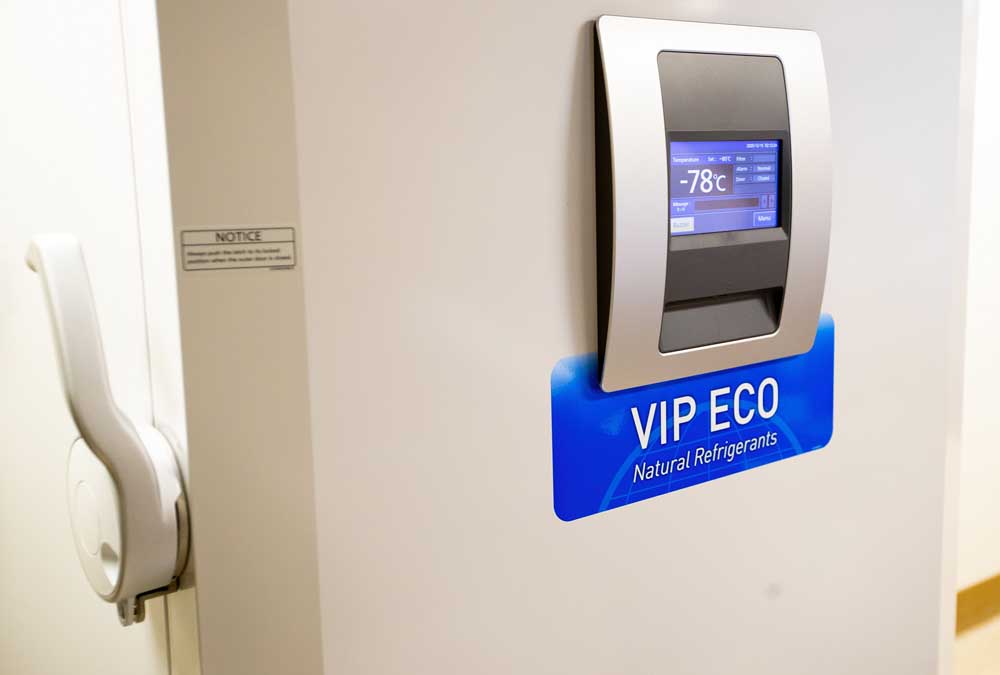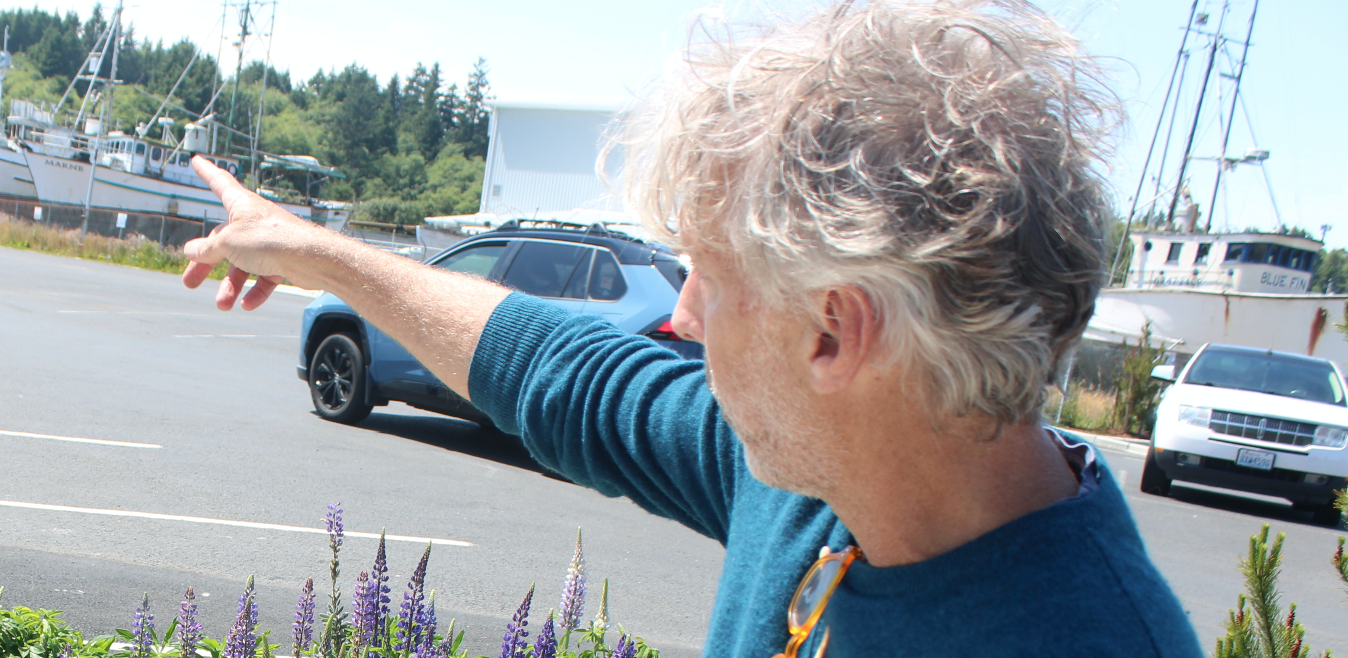County virus activity recedes but still high
Published 10:05 pm Monday, December 14, 2020

- UWMC Montlake campus freezer where the Pfizer coronavirus vaccine is kept at sub=zero temperatures after arriving in Seattle on Monday morning, Dec. 14. These are among the first to be distributed in Washington state.
SOUTH BEND — New covid-19 cases in Pacific County are down from the end-of-November onslaught that saw upwards of 100 cases being reported per week, but 30 new cases were announced over the past week as the county crossed 500 overall.
The county crossed the 500-case milestone on Dec. 11, when the Pacific County Health and Human Services Department reported 23 new cases that brought the total to 509 in the county since the pandemic began. Of those 509 cases, 388 — or 76% — have been announced since the beginning of November alone. The department also announced seven cases on Dec. 9.
As of the most recent update from the county health department on Dec. 11, public health nurses are currently monitoring 47 active cases in Pacific County. The county’s case rate per 100,000 over a two-week rolling average is 351, notably down from a pandemic high of more than 900 in recent weeks but still a sizable figure that was unseen in the county until last month. The state’s long-held goal is fewer than 25 per 100,000.
According to weekly zip code data provided by the county health department on Dec. 9, six new cases are attributed to individuals who list an Ocean Park address as their permanent residence. No new cases were attributed to individuals with Long Beach, Seaview or Ilwaco addresses over the previous week. Two new cases were attributed to Naselle addresses, and 17 combined cases were attributed to Raymond and South Bend addresses.
Wahkiakum County reported six more cases over the past week, bringing its total to 45 cases. Clatsop County reported 50 new cases over the same period, increasing its total to 468 cases. Statewide covid-19 cases totaled 203,797 on Dec. 14, with 12,649 patients hospitalized and 2,918 fatalities reported since the pandemic began.
Vaccine arrives
The first doses of Pfizer’s vaccine, which received an emergency use authorization from the Food and Drug Administration on Dec. 11, arrived in the state on Dec. 14 at the University of Washington Medical Center in Seattle. Doses will be administered starting this week to people in Phase 1a — high-risk health workers, along with staff and residents of long-term care facilities.
The rollout of Pfizer’s vaccine will be slow to start in Washington, as the state expects to receive 62,400 doses this week for a state with a population of more than 7.5 million people. The Washington State Department of Health estimates that there are 500,000 people in Washington eligible to receive the vaccine immediately as part of Phase 1a.
In a Dec. 14 statement, the county health department said initial doses of the vaccine “will be administered across the state over the next couple of weeks, including some in Pacific County.” The department said it will provide updates as the situation develops.
State health officials expect to receive a total of 222,000 doses of Pfizer’s vaccine by the end of December. The vaccine requires two doses be given per individual, spaced 21 days apart, for maximum efficacy.
For the initial rollout of the vaccine in the state, the state Department of Health said in a Dec. 14 news release that initial doses will be distributed to 17 facilities across 13 counties in the state. These sites, the department said, have the capability to store Pfizer’s vaccine in the necessary ultra-cold storage units that the vaccine requires in order to stay viable.
While the department said on Monday it will announce where the remaining allotment of initial doses will go “over the next several days,” several news outlets, including the Seattle Times, reported the same day that Michelle Roberts, the state Department of Health’s acting assistant secretary, said the 62,400 doses have been directed to 40 facilities in 29 counties. The facilities include hospitals, one pharmacy, two tribal nations and an urban Indian health facility.
During the initial rollout, the state will only share the names of the counties that are receiving doses of the vaccine and the amount of doses that each county is receiving. This information was not available as of the Observer’s Dec. 15 print deadline.
As the vaccine becomes more widely available and is expanded to more groups of people, specific details on where the vaccine is available within counties and communities will be made available, the state Department of Health news release said.
Another vaccine likely on the way
Later this week, the FDA will consider an emergency use authorization for Moderna’s vaccine. Like Pfizer, Moderna’s vaccine is estimated to provide at least 90% efficacy and is expected to be approved by the FDA after an independent panel from the Centers for Disease Control and Prevention holds a hearing on Dec. 17.
If approved, Washington expects to receive about 183,800 doses of Moderna’s vaccine by the end of the month, with regular weekly shipments beginning in January. Similar to Pfizer, Moderna’s vaccine also requires two doses to be administered to each person, but spaced 28 days apart.
While Pfizer’s vaccine requires ultra-cold storage to be used throughout the process prior to being administered, Moderna’s vaccine is easier to store. Moderna’s vaccine can be stored at 2 to 8 degrees Celsius, about the temperature of a normal refrigerator, for up to 30 days, the company claims. Pfizer’s vaccine can only last up to five days when refrigerated.
The less complicated storage requirements for Moderna’s vaccine is particularly positive news for rural areas and communities that don’t have access to the likes of ultra-cold storage freezers to store Pfizer’s vaccine for extended periods of time without having to constantly replenish storage units with dry ice. County officials purchased an ultra-cold freezer for Ocean Beach Hospital, but the freezer’s vendor is backlogged and isn’t projected to arrive until mid-January.
“We believe that if everything goes according to plan, we’ll have most people in Washington vaccinated by mid-summer,” said Roberts.






